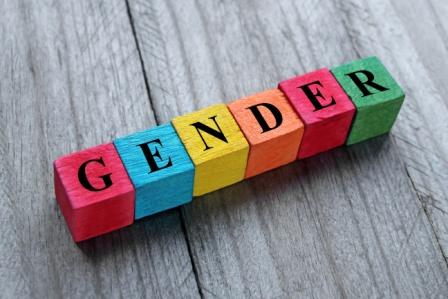The gender gap in India widened
a lot further than it already was when it fell 28 places in the Global Gender
Gap Index to place 140th out of 156 countries in 2021. It was placed
at 112 out of 153 in 2020 so this huge drop in just one year shows how badly
India has fared in gender equity.
According to the report,
South Asia is the worst performing region globally with only 62.3 percent of
its gender gap closed. Here, Bangladesh is far above the rest of the countries
in the region placing 65th amongst 156 countries followed by Nepal
at 106th and Sri Lanka at 116th spot.
India has widened its gender
gap from 66.8 percent in 2020 to 62.5 percent this year. Further, India
declined three percentage points in Economic Participation and Opportunity
subindex. Also, only 29.2 percent of technical roles are held by women.
The global gender gap is
measured on four sub indexes: Economic Participation and Opportunities,
Educational Attainment, Political Empowerment and Health and Survival. The Global
Gender Gap Index began in 2006 and in the 14th edition 156 countries
were benchmarked.
Covid 19, the report pointed
out has impacted women more severely than men, partially re-opening gender gaps
that had already been closed. The report mentions that on its current
trajectory, it will take 135.6 years to close the gender gap worldwide.
Iceland held its first
position as the most gender equal country in the world for the 12th
year. Finland, Norway, New Zealand and Sweden were in the 2nd, 3rd,
4th and 5th position out of the 156 countries. Two
African countries Namibia and Rwanda held the 6th and 7th
position as the most gender equal countries, while Lithuania, Ireland and
Switzerland were placed 8th, 9th and 10th
respectively.
In South Asian region, the
most pressing area is the gender gap in Economic Participation and Opportunity sub
index where only 33.8 percent of the gap has been closed, which the report pointed
out was the lowest amongst all regional groups. Here Afghanistan has the lowest
rank with only 18 percent of the gender gap closed while India has 31.6 percent
of the gender gap closed and Pakistan has 32.6 percent score. The regional
champion in this category is Nepal with 63 percent of the gender gap closed.
Low participation of women in
the labour force hinders economic opportunities for women throughout South
Asia. Only 22.3 percent women in India, 22.6 percent in Pakistan and 38.4
percent in Bangladesh are active in the labour market. By contract, there is 85
percent participation of women in the labour force in Nepal.
The report mentions that, “Gender
gaps on the Political Empowerment subindex are also stark across the region and
have further widened this year. Only 28.1% of this gender gap has been bridged
to date, down from 38.7% reported in the last edition. The decline in the share
of women among ministers in some of the most populous countries explains most
of the regional decline.”
Pointing to India, the report
say, “In India the share of women ministers decreased from 23.1% to 9.1%, and
in Pakistan from 12% to 10.7%. Women remain acutely underrepresented in the
political sphere in this region. In no country is the share of women in
parliament above 33% in South Asia. In the three most populous countries, the
share lies between 14 and 20%, and in some countries, it is as low as 5.4% (Sri
Lanka) and 4.6% (Maldives).”
The situation is much better
in the Educational Attainment subindex. Here 93.3 percent of the gender gap has
been closed in South Asia. But differences in the various countries are marked.
Female literacy is as low as 53.7 percent in Afghanistan, 65.8 percent in
India, 59.7 percent in Nepal, 57 percent in Bhutan and 46.5 percent in Pakistan
with little hope of this gap closing in the near future.
The hope of closing
educational gender gaps lies with the younger generation, but not everywhere,
the report stated.
The 2021 report on Global
Gender Gap points out that the preference of sons and sex selective practices is
hampering the Health and Survival subindex in the region. It says, “Another
aspect that limits faster progress in gender parity in South Asia is Health and
Survival: only 94.2% of the gap on this subindex has been closed to date.
Notably, the low performance of large countries such as India (93.7%) and
Pakistan (94.4%) can be traced to the persistence of son preference and sex
selective practices, preventing a faster evolution toward parity on this
dimension.”
The Global Gender Gap Index rankings by region, 2021
South Asia
|
Country |
Rank |
Global rank |
Score |
|
Bangladesh |
1 |
65 |
0.719 |
|
Nepal |
2 |
106 |
0.683 |
|
Sri Lanka |
3 |
116 |
0.670 |
|
Maldives |
4 |
128 |
0.642 |
|
Bhutan |
5 |
130 |
0.639 |
|
India |
6 |
140 |
0.625 |
|
Pakistan |
7 |
153 |
0.556 |
|
Afghanistan |
8 |
156 |
0.444 |

